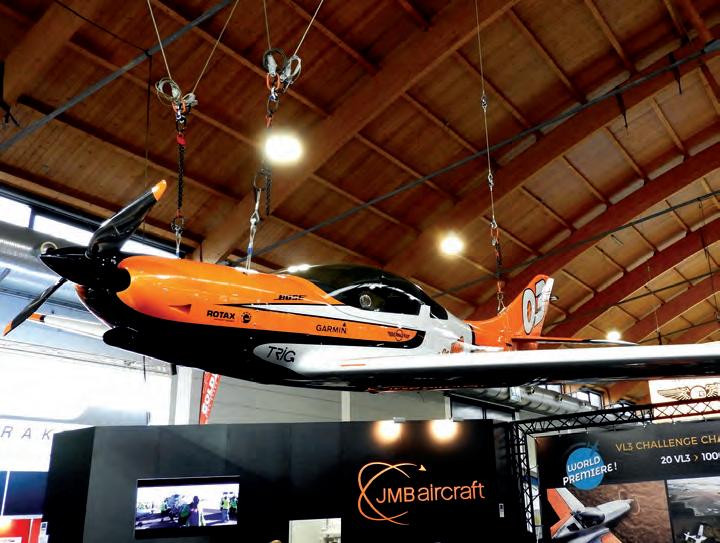Project News
Projects which inspire others to build their own aircraft Compiled by Mike Slaughter
Project News A quick peek in the New Projects this month reveals the usual recurring favourites, plus a couple of unusual types. The first that caught my eye is a Volmer VJ-22 Sportsman, a late 1950s two-seat high-wing amphibian, designed around a pair of redundant Aeronca wings with a wooden fuselage ‘hull’. There was an example built some years ago that I believe used to operate in Scotland. The second rare beast is a Jurca Sirocco, again there’s only one other currently on the UK register – Peter Watts’ retractable variant, G-CEAO, which has featured in an LA flight test. There were at least a couple of fixed-gear versions flying in the past, G-AZOS being one of them, now showing as permanently withdrawn from use. The Sirocco is a low-wing two-seat tandem with a bubble canopy of all wooden construction, like a wooden RV-8. It’s a Marcel Jurca design from the 1960s – a real little fighter, especially the retractable variant.
Dudley Pattison has provided another update on his current KFA Safari project, it is starting to look close to finished. If you were fortunate enough to get along to the Rally, you may have seen Sprite Aviation’s completed and flying KFA Safari there. Technology, as ever, plays an increasing role in our projects, and Mark Goodacre has applied modern thinking to the process of laying out his panel. While I’m sure he’ll not be the first to have used CAD software to design a panel, he’s taken the further step of cutting it out with his own CNC router. Take a look at his report below, perhaps you too have employed a modern twist in part of your building process, if so your fellow members would love to hear about it! To get in touch with Project News, and tell your story, report a milestone or just to send a picture, email: projectnews@laa-archive.org.uk. Please share your story!
KFA Safari update (LAA 402 – 15670) By Dudley Pattison
Above This shot shows the removable fibreglass boot cowl and windscreen giving excellent access to the rear of the instrument panel. The VZ Rotax engine is ready for hoisting into position. Photo: Dudley Pattison
M
y Safari build is nearing the end, but I am in no rush to finish it as we head toward winter. Many obstacles, Covid-19 among them, have conspired to keep me from flying my last build, an RV-7A, and as I only have room for one aircraft in my hangar the RV will have to be sold when it is time to transport the Safari to the field. So, my intention is to fly the RV throughout the winter and sell it in March. The Safari build has been the usual mix of pleasure and frustration, the most recent source of angst being the fact that I cannot get the flaperons working properly at the moment, but I did have a light bulb moment yesterday and I think I have found the problem. Stefan, the owner of KFA, sent me some short videos via WhatsApp giving the flaperon set-up sequence, which helped identify an error I had made. I haven’t had time to rectify it yet but have high hopes that all will be well when I do. Flaperons are new to me, and I confess to having difficulty in getting my head around the geometry involved. Not reading the instruction also resulted in extra work on the undercarriage. When I covered and painted the undercarriage legs, I fitted them to the fuselage and added the wheels and disc brakes before realising that
10 | LIGHT AVIATION | October 2021
LAA10.projectnews.V3.LB.GRN.indd 10
22/09/2021 14:30













